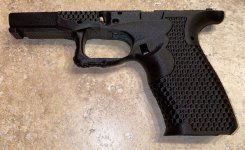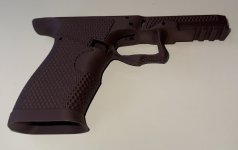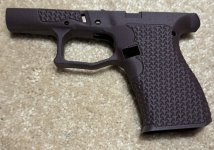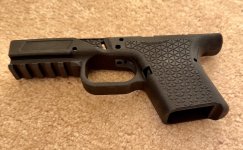What printing parameters are you using? My prints rarely show layer lines. My initial frame 18 months ago was REALLY bad, I used regular PLA and standard printer parameters. Printed in about 8 hours. It failed after 3 rounds, but I used extreme safety precautions and everything was fine. Since then, I've done a lot of trial and error, and my go-to filament for frames (Glock and AR) is Polymaker Fiberon PA6-CF20. The strength is excellent, but I highly recommend annealing at 180F for 6-8 hours (per Polymaker recommendations). There is a lot of discussion about this on Reddit in the fosscad thread, and on Odysee. I've done G26, G43, G19, G20. Some need some tweaking and troubleshooting, but overall they work VERY well, and function nicely on the range. I've attached a few pictures. The brown frames are PLA-CF, which prints nicely but isn't as durable as PLA-Pro (PLA-Plus). I use that occassionally now for accessories like braces. I like the PA6-CF20 for 10/22 receivers, very durable. I don't like the glass fiber filament, I tried several prints with different parameters and it still warps.











